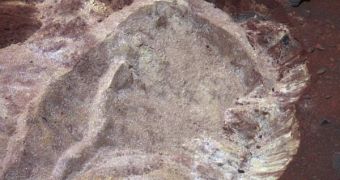The Spirit Martian rover is rising up to its name, NASA has announced recently. Despite being stuck up to its hubcaps in loose soil, the robot continues to do relevant science, taking pictures of its surroundings, and also of Troy, the patch of Earth that trapped it on May 6th. While engineers at the Jet Propulsion Laboratory, in Pasadena, California, are working desperately on finding a way to get the rover out of the sand, mission controllers are using its cameras to collect as much evidence on the soil as possible.
“By serendipity, Troy is one of the most interesting places Spirit has been. We are able here to study each layer, each different color of the interesting soils exposed by the wheels,” the Mars Exploration Rovers (MER) science payload Deputy Principal Investigator Ray Arvidson explained, quoted by Space. The expert is based at the Washington University in St. Louis. One of the rover's wheels, which got stuck pretty deep in the sand, has revealed numerous layers of ground, which Spirit is analyzing.
“The layers have basaltic sand, sulfate-rich sand and areas with the addition of silica-rich materials, possibly sorted by wind and cemented by the action of thin films of water. We're still at a stage of multiple working hypotheses. This may be evidence of much more recent processes than the formation of Home Plate, or is Home Plate being slowly stripped back by wind, and we happened to stir up a deposit from billions of years ago before the wind got to it?” he asked.
Troy is located near the Home Plate, a rocky formation that Spirit has already investigated, and about two miles (3.2 kilometers) away from the place where the rover first landed on Mars, back in 2004. Since then, it has gone through a great deal of troubles, jamming one of its front wheels, and being forced to subsequently drive backwards for the last three years. During this time, mission controllers said, they accumulated sufficient experience to handle any contingency in future robotic exploration missions.
“The exceptional amount of power available from cleaning of Spirit's solar arrays by the wind enables full use of all of the rover's science instruments. If your rover is going to get bogged down, it's nice to have it be at a location so scientifically interesting,” Johnson Space Center rover team member Richard Moddis concluded, adding that, in April and May, powerful winds cleared Spirit's solar arrays of all dust accumulated on them. This means that energy supply is no longer a problem, as in other stages of the mission. On the other side of Mars, Opportunity is driving happily towards its destination.

 14 DAY TRIAL //
14 DAY TRIAL //